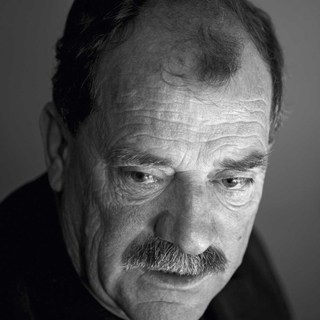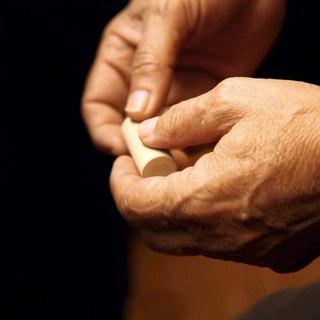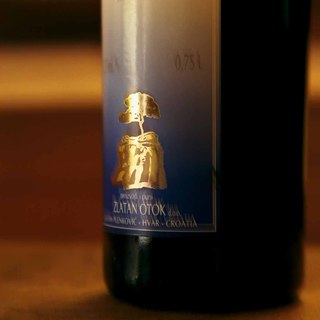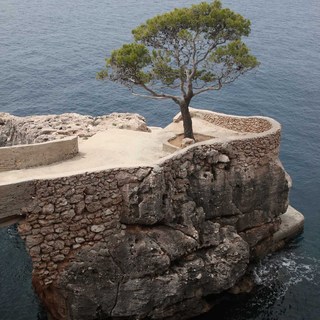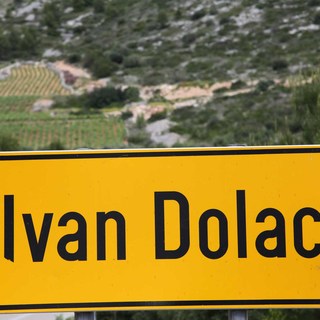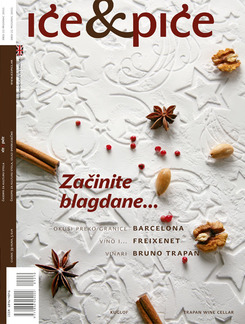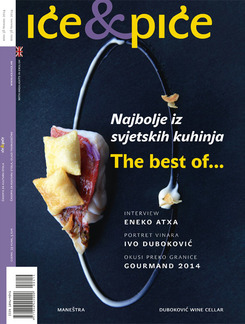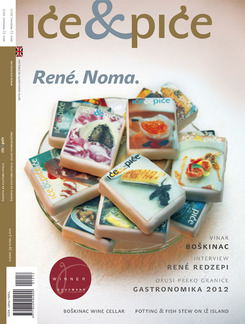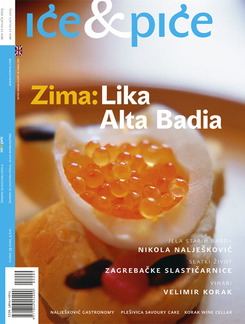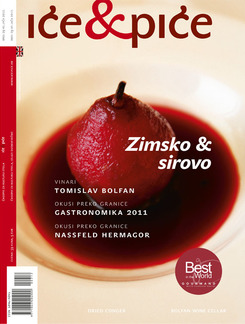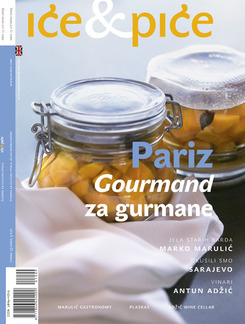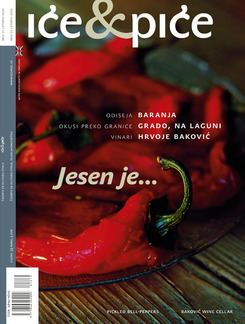Wine Cellar’s ID
The beginnings
I bought the first six barrels in 1985 (these were not barriques, rather the classical kind, of 200-300 litres), started making samples and a year later reported the first vintage to the Institute for Adriatic Crops and the Improvement of the Karst for it to monitor. No private initiative was at that time wholeheartedly accepted, but I was exceptionally resolute, one might even say defiant, because my first bottle was supposed to have come out long before, in 1972. Then I had the idea to give the guests of my boarding house something that would remind them, during the year, of their stay in Sveta Nedljelja and motivate them to come again. I was forestalled in this intention of mine by the unlucky political conditions. But, at the end of 1989, my first bottle had a label declaring it to be “wine of superior quality”. I was the first private winemaker who put wine of superior quality on sale.
The vineyard
My first hectare, in the mid-eighties, yielded between three and four tons of Plavac. But I leased from a relative the neighbouring vineyard, and so by 1989 I was already producing 9,100 bottles a year, a year later 28,000 bottle, and in 1991 180,000 bottles. Then I subcontracted for the whole area of Sv. Nedjelja, which means about 64 ha. Now I have subcontracts for about 100 ha on Hvar, and in Makarska, that is in Baško polje, I have planted about 55 ha and next year plan to plant another 25.
The variety
My main winner is Plavac Mali – Small Plavac – which accounts for about 70% of the whole of the production. However, one day I believe I will produce Crljenak as a special label, while the other varieties will be used for coupage. A bottle from the Makarska vineyards that is just now coming out onto the market is called Zlatan Ostatak Bure (Zlatan Remains of the North Wind) and this is supposed to be Carignan – red and white. As for white varieties, I shall have only 15% in Makarska, the basis of which will be Pošip. In Hvar, though, we have so many white varieties it is hard to count them all up. For example, in the Zavala vineyard I have planted 18 different varieties, just 100-150 items each, to see which thrive best in our area. Here the basis is Pošip, Bogdanuša and Maraština – as well as 2% Yellow Muscat.
This year in Baško polje I picked 4 tons of white grapes, because 2 ha were planted only three years ago. There is most Pošip (70%), then Žilavka (20%) and Chardonnay (10%) – and if I decided to irrigate or if there were more moisture the conditions would be created for some kind of sparkling wine, which would be a complement for the sales line.
The cellar
It’s impossible to work without combining stainless steel and barrique. You have to have a coupage space, a place for maceration. With white wine we have a special way with barrique, but only a small number of buyers can recognise this. With the reds we have macerated for up to 34 days. In a longer maceration time, Plavac gains in seriousness, but loses something of its identity, so we gave up on that. Now we macerate Plavac for a week, and with whites we don’t use maceration at all, and leave them just to ferment in the press for a few hours. We work with barrique-style barrels a lot. We have about 850 of them, and change 150 of them every year. On the whole, we use them about three times, because in this way some of the wines don’t ferment. On the other hand, there are some wines that we keep in the barriques up to three years. There are 8 big barrels of 45 hectolitres each, which are used when we decide to take the wines out of the barriques, because we think they’ll absorb too much of the wood, but yet they still need time for the tannins to calm down and meld.
The bottles
Today there are 11 of our labels on the market – between 250,000 and 270,000 bottles of red and about 120,000 – 140,000 whites. However, this varies from year to year. About 70% are wines of superior quality, and for me that is the main characteristic. At the moment we produce more than 250,000 bottles of wine of superior quality, and since the Prošek – a quality wine with pedigree or in Italian DOCG, is also of superior quality, then we have at least 300,000 bottles a year of superior quality wine. I have an archive of my wines. Next year will be the twentieth birthday celebrations. Some years I have saved 200 and in some years as many as 5000 bottles – the quantity depending on the year, but they are all stored.
The firm – the people
When I set out to commercialise wine, I was completely on my own. But taking on the whole of Sv. Nedjelja was financially too big to swallow, but then Tomić and Franceschi came along. This collaboration lasted for a year and a half. In 1993 I worked alone again, and then Nikša, our current oenologist, appeared. Today there are four graduate and one ABD oenologists employed in the firm. The full time labour force counts about fifty, and from February to July when work in the vineyards is at its peak, the number climbs to more than 80.
Life – objectives – achievements
It seems I like taking more risks than usual. That’s what every one of my moves is like. No one wanted to touch Baško polje, and when I set out on the open air marina project, they all thought I had gone mad. But private winemakers have to be a bit special. There are risks lying in wait for you round every corner. For example from the 80s to the mid-90s it was impossible to sell Plavac or give it away, but I was sure it had to succeed, and that drove me on. Unlike others, I started off from the vineyard. I forbade all my associates to put on artificial fertiliser, and took samples in the vineyards and constantly made the subcontractors see that with my way of working there was no difference in the yields, just an increase of quality. With a great deal of problems we got the vineyard up to 27 extracts – the minimum, for a superior quality wine – got the acidity up to 5 g, and the alcohol to 13%. It’s hard to imagine the kinds of problems we had to face. We were constantly crossing something. Today we have the opposite problem – we don’t have enough for ordinary Plavac, because the alcohols are so high.
The philosophy
There is no such thing as a good viticulturist but a bad winemaker and vice versa. You have to decide whether you are going in for the mass or the quality market. A quality producer can’t be a bad cellar master. The two things are incompatible. The problem actually is that a lot of people well educated in wine get into the business out of interest and calculations – a kilo of grapes is 5 kuna and a filled bottle 15. That’s a mistake. I decided to go in for quality, and I am constantly learning. Things in the cellar can always change, but once you have planted a vineyard, there is nothing to change. You might have made a mistake in the variety, or the distance apart, or the irrigation or something quite different. But there’s no helping it.
I don’t know if I am bolder than I was twenty years ago, but I certainly sleep better and live more casually. There is still the administrative part of the problem and the story and it’s hardest to deal with the paper. This holds up young people with the will and the ideas.
